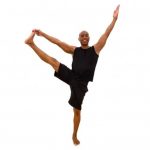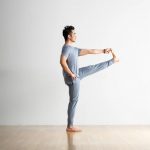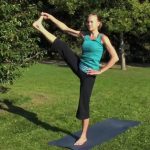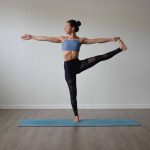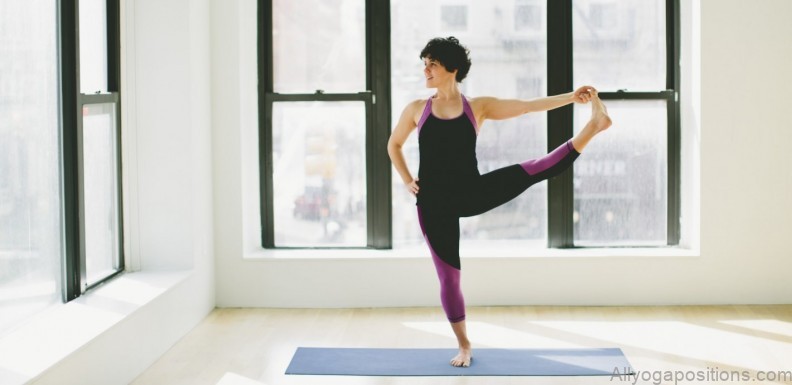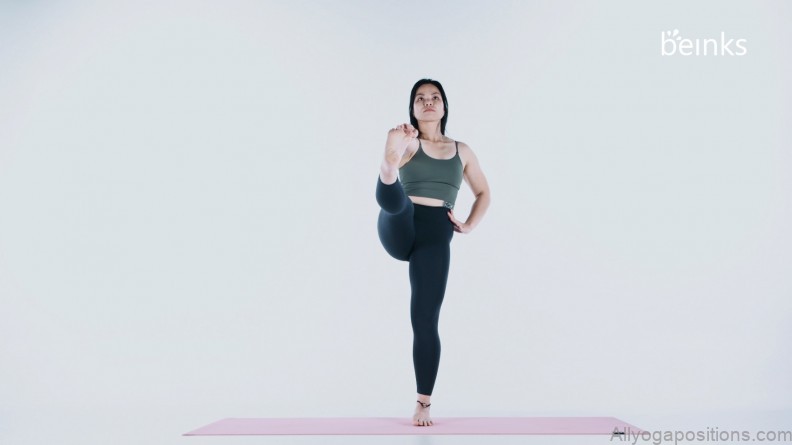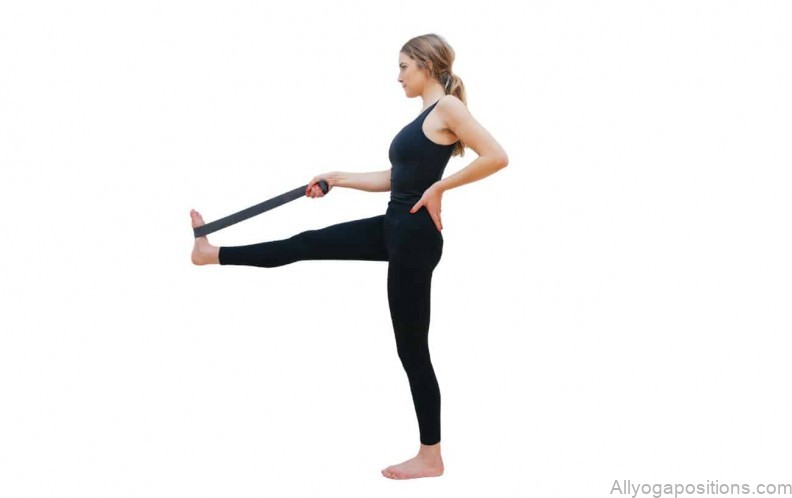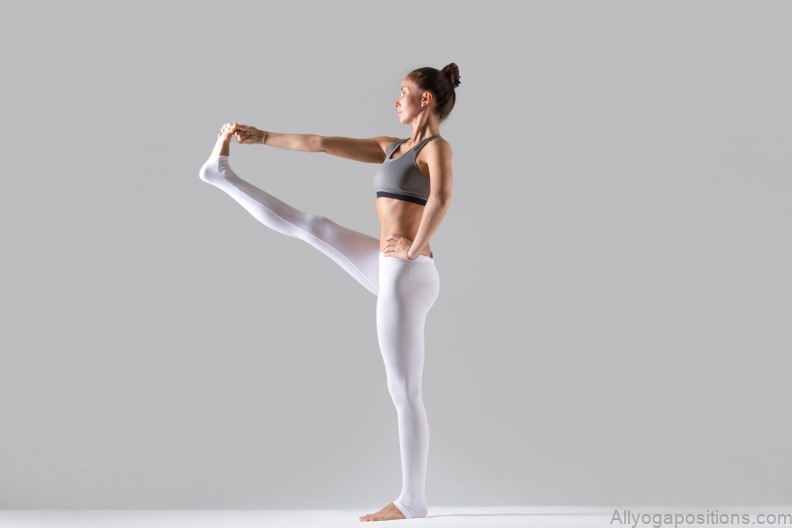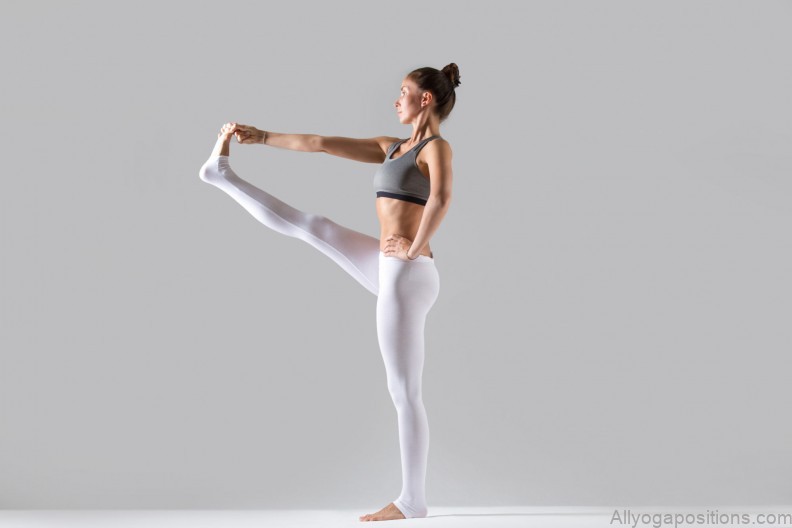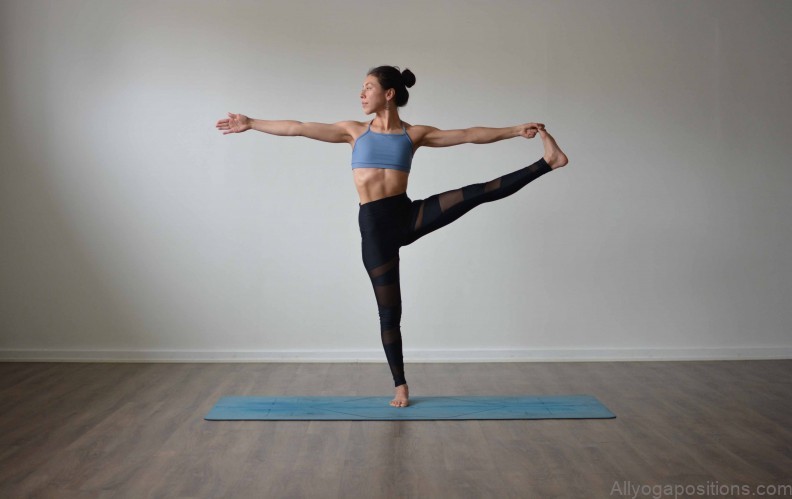Understanding Utthita Hasta Padangusthasana
Utthita Hasta Padangusthasana, or the Extended Hand-to-Big-Toe pose, is a foundational standing yoga pose that opens up a myriad of benefits for practitioners. The pose’s Sanskrit name — “Utthita” means extended, “Hasta” means hand, “Pada” means foot, and “Angustha” means big toe — vividly encapsulates the essence of the posture. By holding your toe with an extended hand, you create a balance challenge that encourages focus, stability, and flexibility.
Despite its seemingly straightforward execution, Utthita Hasta Padangusthasana is a complex blend of strength, balance, flexibility, and concentration. It’s not just about touching your toe; it’s about engaging every muscle and every breath to create a seamless connection between mind and body.
Preparing for the Pose
Before you plunge into Utthita Hasta Padangusthasana, it’s essential to prepare your body appropriately. Warm up with a few rounds of Sun Salutations (Surya Namaskar), allowing the body to become flexible and fluid. Follow this with a few standing and balancing postures to further build heat and strength in the body.
Other beneficial preparatory postures include the Tree Pose (Vrksasana) to improve balance, Downward-Facing Dog (Adho Mukha Svanasana) to stretch the hamstrings, and Hero Pose (Virasana) to open the hips and strengthen the ankles.
Remember, each body is unique, and what works for one person may not work for another. Listen to your body’s signals and adjust your preparatory routine accordingly.
Unraveling the Secrets of the Extended Hand-to-Big-Toe Pose: Your Guide to Mastering Utthita Hasta Padangusthasana Photo Gallery
A Detailed Step-by-Step Guide
Mastering Utthita Hasta Padangusthasana can seem daunting at first, but by breaking down the pose into smaller steps, it becomes manageable and accessible.
- Start in Mountain Pose (Tadasana). Stand tall, feet hip-width apart, with your weight evenly distributed between both feet.
- Shift your weight to your left foot. Engage your left thigh muscles and ground down through your left foot while you bring your right knee towards your chest.
- Reach for your right big toe. Use your right hand to hold onto your right big toe. If this isn’t accessible, you can use a yoga strap or even hold onto your knee.
- Extend your right foot forward. Slowly start to extend your right leg out in front of you, while keeping your left hand on your left hip.
- Breathe and balance. Continue to breathe deeply as you try to maintain balance. Keep your gaze forward to help with balance, or for an extra challenge, try looking up.
- Open the pose. If it feels comfortable, you can try to open your right leg out to the right side, but be careful not to let your left hip pop out to the side as well.
- Return to center and release. Bring your right leg back to center before releasing your toe (or knee). Repeat on the other side.
Health Benefits of the Pose
The Extended Hand-to-Big-Toe Pose is more than a test of balance; it offers an array of physical and mental health benefits.
Physical Benefits: This pose helps strengthen the legs and ankles and stretches the hamstrings and hips. It also stimulates the abdominal organs, potentially improving digestion. Moreover, it helps improve your sense of balance and body awareness, which can translate into better posture and movement in daily life.
Mental Benefits: Like all balancing poses, Utthita Hasta Padangusthasana requires focus and concentration, helping to clear the mind and reduce stress. It can also boost confidence. Each time you practice and make even a small bit of progress, you prove to yourself that you can achieve challenging goals, which is incredibly empowering.
Common Mistakes and Modifications
Despite the best intentions, mistakes can occur when practicing this pose. Many people tend to force their raised leg into straightness, which can cause strain. Instead, prioritize maintaining a straight and strong standing leg and a tall spine, even if that means your raised leg needs to remain bent.
For those struggling with balance, practice near a wall for support, or use a chair for added stability. Remember, it’s better to do a modified version of the pose correctly than to risk injury.
Lastly, always remember to practice on both sides to maintain body balance. No one’s body is perfectly symmetrical, but practicing yoga offers us a chance to bring a bit more balance and harmony to our physical structure.
Remember that the journey of yoga is not about achieving the perfect pose but about the ongoing process of growth and self-discovery. Embrace the challenge of Utthita Hasta Padangusthasana and enjoy where it takes you.
Table of Contents
Maybe You Like Them Too
- Mastering Virabhadrasana A: The Warrior Pose of Empowerment
- Embracing the Essence of Wide Legged Forward Bend: A Deep Dive
- Unlocking the Power of Prasarita Padottanasana: The Wide-Legged Forward Bend
- The Power and Elegance of the Wide Legged Forward Bend II Yoga Pose
- Mastering the Warrior II Pose: A Deep Dive into Its Benefits and Techniques




